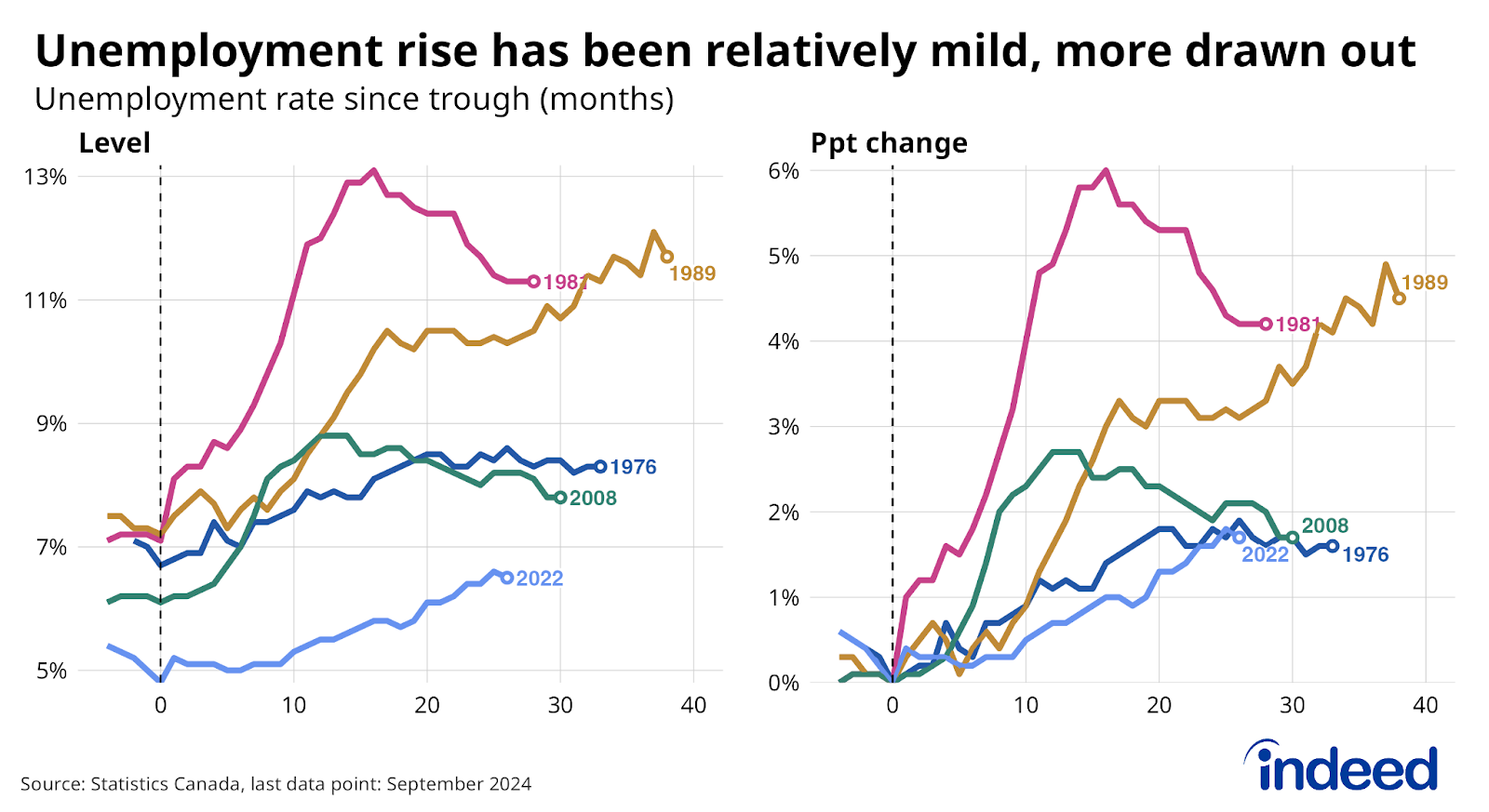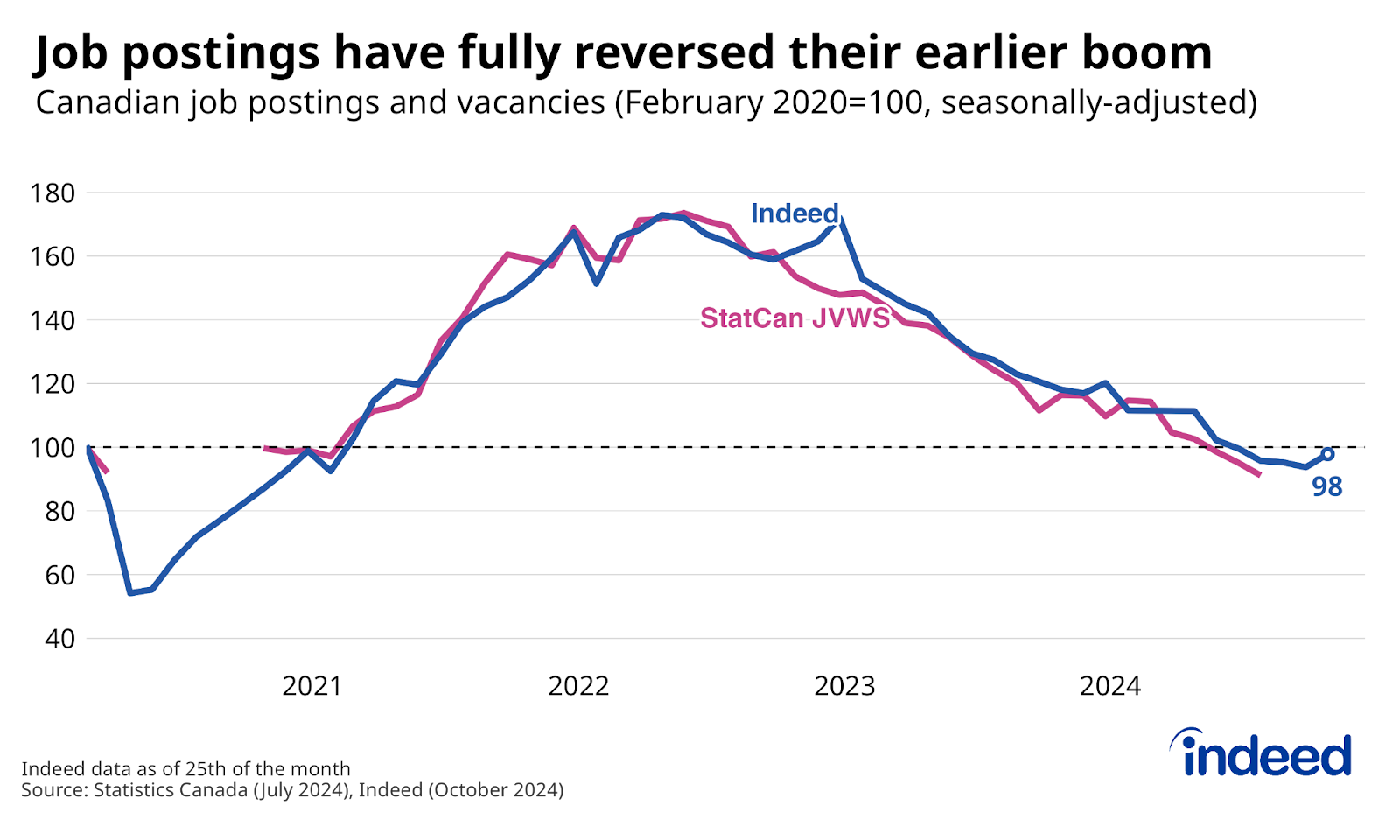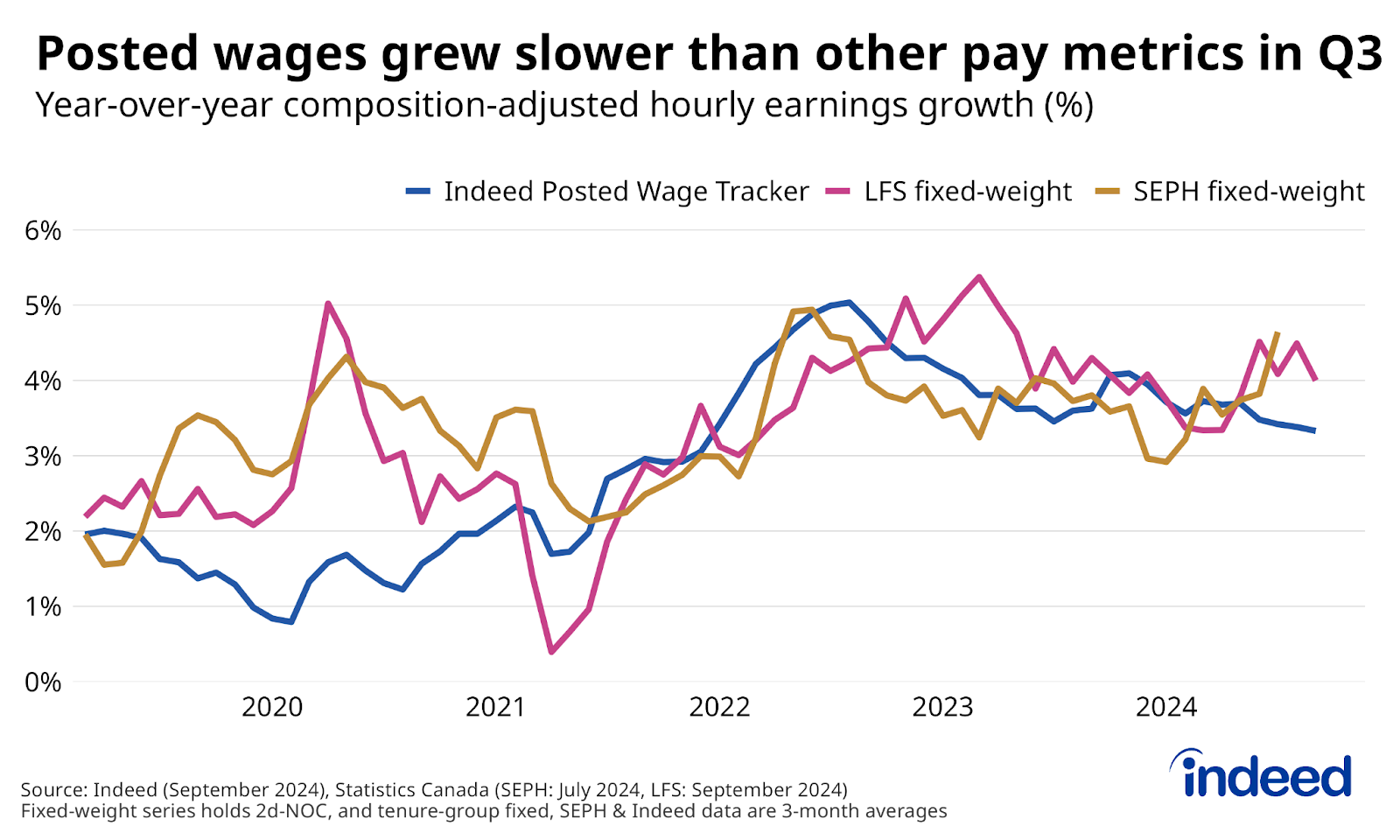Report cites 'growing divide between those experiencing good job security and solid wage growth, and those out of work struggling to find new roles'

Canada’s labor market in the third quarter of 2024 continued to show signs of a slow but steady decline.
Trends observed earlier in the year persisted, with employment growth falling behind population increases, ultimately raising concerns over the job market’s capacity to stabilize, according to a report from Indeed.
According to Ottawa’s Labour Force Survey (LFS), employment grew at a rate of 34,000 jobs per month in August and September. However, these numbers were not enough to keep up with the strong population growth, which Brendon Bernard, senior economist at the Indeed Hiring Lab, notes has been “the case in the LFS for all but one month so far in 2024.”
Industries like education, healthcare, and arts and recreation saw relatively strong growth, while manufacturing, retail, and food and accommodation services lagged.
“Education, arts, and entertainment, and healthcare have grown relatively quickly of late,” he says, yet several key service sectors “have dropped over the past six months.”
Labour market: ‘We’re waiting for a turning point’
The unemployment rate mirrored this slower employment trend, rising from 6.4% in June to 6.5% in September. Bernard points out that this trend reflects “a broader trend that has emerged over the past two years — the labour market’s deterioration has been relatively slow,” noting that “the unemployment rate isn’t especially high compared to previous recessions.”

However, he adds that this decline is unlike previous economic downturns. “Joblessness spiked considerably higher during both the 1981 and 2008 downturns,” he writes, but today, “we’re still waiting for a turning point.”
Slow hiring continues to play a significant role in the current market conditions. New job creation in Q3 was “22% below average levels that prevailed during the same period in 2017-2019,” with job security remaining solid due to low layoff rates, says Bernard, “down 10% compared to their pre-pandemic average.”
Despite this security, he notes, “it has gotten tougher for those unlucky enough to lose work to land new roles.”
Job postings dip in October
In terms of hiring activity, Indeed job postings have dipped despite a minor uptick in October, the first notable increase in 2024. As of October 25, Canadian job postings were down 17% year-over-year and stood “2% below their pre-pandemic level,” says Bernard in his report.

Posting trends reveal that healthcare occupations are among the few to remain elevated, with postings up by as much as 60%, while roles in marketing, sales, and software development have declined by about 30%.
On wage growth, the numbers tell a complex story. LFS data showed hourly wage increases of 4% year-over-year in September, while the Survey of Employment Payrolls and Hours (SEPH) recorded a growth of 4.7% in July.
Bernard attributes this to a “still-elevated pace of pay gains in 2024,” despite inflation falling below 2%.

However, he warns that advertised wage growth on Canadian job postings could signal a future slowdown, with the Indeed Wage Tracker showing a modest 3.3% increase in Q3 — “down slightly from 3.5% in Q2.”
Bernard concludes that “current labour market trends” are likely to persist into 2025. He points to a “growing divide between those experiencing good job security and solid wage growth, and those that are out of work struggling to find new roles — especially youth and recent newcomers.”




